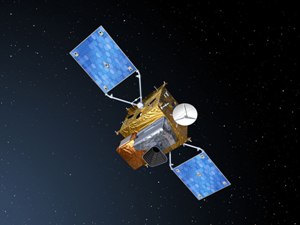Jul 18 2013
e2v, a leading global provider of high performance imaging solutions, has signed a contract worth €2.8M with Astrium, Europe’s leading space technology company. e2v will supply imaging sensors to equip the European Space Agency’s (ESA) Sentinel 4 Ultraviolet Visible Near-infrared (UVN) instrument, which will gather data on the quality of the Earth’s atmosphere and its chemical composition from geostationary orbit.
 Artists impression of Sentinel 4 - courtesy of ESA
Artists impression of Sentinel 4 - courtesy of ESA
Sentinel 4 is part of the Global Monitoring for Environment and Security (GMES) initiative, which is a joint undertaking of the European Commission and the European Space Agency. It will deliver environmental and security services in Europe, in response to the ever-increasing demands for effective environmental policies. ESA is responsible for the Space component of GMES, of which the five families of Sentinel missions are key components. Within this programme, Sentinel 4 will be carried into orbit onboard the Meteosat Third Generation (MTG) geostationary satellite and enable seamless observations of Europe and North Africa to be taken hourly.
e2v’s space qualified, custom Charge Coupled Device (CCDs) image sensors will be produced using cutting edge technologies, including back illumination, which delivers the best Quantum Efficiency (QE) and Modulation Transfer Function (MTF) over the wavelength range of interest for this hyperspectral imaging system. The sensors are mounted in an e2v designed package assembly which manages the electrical, thermal, mechanical and optical interfaces to the instrument. The contract is carried out with funding from the European Union.
Hans Faulks, General Manager High Performances Imaging at e2v, said “e2v is delighted to sign this contract with Astrium. It demonstrates how e2v’s imaging technology for Earth observation applications is well recognised and adds to more than 100 Earth observation programmes running with our high performance imaging sensors.”